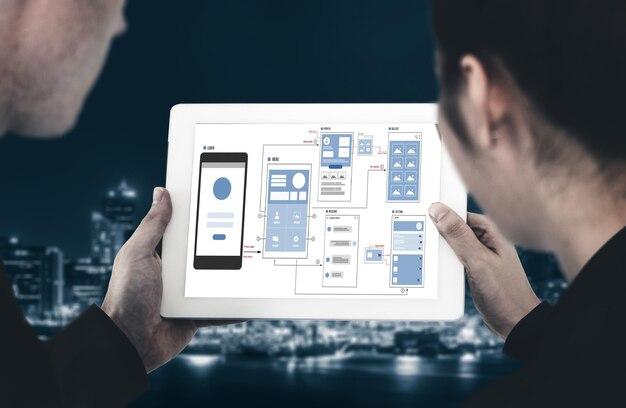Introduction
In an era where smartphones dominate our daily lives, the rise of on-demand services has led to a significant shift in how we access and consume products. From food to electronics, flowers to furniture, the option to have items delivered right to our doorstep is now not only a luxury but a common expectation. At the heart of this paradigm shift is the mobile delivery application. To better understand these apps, we need to delve into the fundamentals of their architecture. If you’re looking into building one, considering a delivery app builder can simplify the process.
1. User Interface (UI) & User Experience (UX)
The success of any app starts with its design. A user-friendly interface is essential for a delivery app. Intuitive designs lead users seamlessly from one step to another, from selecting products or services to confirming the delivery.
User experience is just as vital. It involves the look and feel of the app, the responsiveness of its pages, and how easy it is for a user to complete a task. A well-designed UI/UX not only enhances user satisfaction but also drives user retention.
2. Backend Infrastructure
The backend is the backbone of your delivery app. It’s where data processing occurs, and it’s what makes the app function.
- Databases: Store information like user profiles, order histories, and product details.
- Servers: Handle requests from the app, process them, and return the required information.
- Application Programming Interface (API): Allows your app to communicate with servers and databases, fetching and sending data as needed.
A robust backend ensures that your app can handle multiple users simultaneously, process orders quickly, and safeguard user data.
3. Real-time Tracking & Notifications
One of the hallmarks of delivery apps is the ability to track orders in real-time. This functionality not only keeps users engaged but also ensures transparency in delivery times and statuses. Integrating real-time tracking involves using:
- GPS Technology: To track the location of delivery agents and provide route optimization.
- Push Notifications: To update users about order status, offers, or any other essential information.
4. Payment Integration
A critical aspect of any delivery app is a secure and diverse payment gateway. Users should have the flexibility to choose from multiple payment methods:
- Credit/Debit Cards
- Digital Wallets
- Cash on Delivery
- Net Banking
To ensure security, using encryption protocols and adhering to payment card industry standards is crucial.
5. Feedback & Review Systems
Post-delivery feedback is valuable. By incorporating a system where users can rate and review the service or the product, businesses can improve continually. Moreover, these reviews serve as a trust factor for new users, aiding in their decision-making process.
6. Analytics & Reporting
Behind the scenes, it’s essential to understand user behavior, order patterns, and app performance. Analytic tools embedded within the architecture can provide insights into:
- Most ordered products
- Peak ordering times
- User demographics
- App performance metrics
Such insights can help businesses tweak their strategies, offers, or even app functionalities.
7. Integration with a Delivery App Builder
If you’re not keen on building an app from scratch, a delivery app builder offers pre-built templates and functionalities tailored for delivery services. These platforms provide:
- Customizable templates to match your brand.
- In-built functionalities like payment gateways, real-time tracking, and analytics.
- Scalable architecture to accommodate growing user numbers.
While using a delivery app builder may seem like a shortcut, it’s essential to understand that these platforms are designed with the industry’s best practices in mind, ensuring that businesses don’t miss out on any crucial features.
8. Scalability
The ability to scale is perhaps one of the most overlooked aspects of delivery app architecture. Your app might start with a few hundred users, but as it grows popular, it could attract thousands or even millions. The architecture should be robust enough to handle this growth without compromising performance.
Conclusion
The architecture of a delivery app is multi-faceted, comprising various components that must work in harmony. From the frontend design that users interact with, to the backend processes that remain invisible, each element plays a crucial role in ensuring the app’s success.
If building from scratch seems daunting, remember that platforms like a delivery app builder are designed to simplify the process, ensuring you have a robust, feature-rich app ready to serve your customers.
In the end, as the digital realm continues to expand, understanding the architecture and having a well-designed delivery app can be the distinguishing factor between success and getting lost in the noise.


